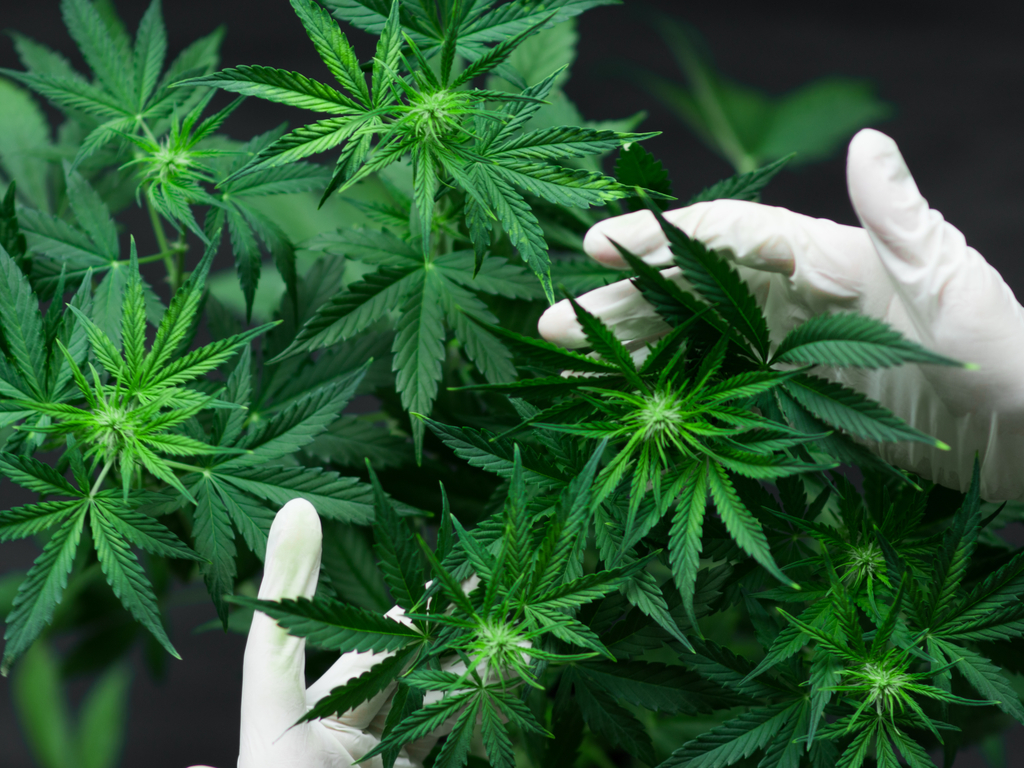Newfound Cannabis Compound May Be 30 Times More Potent Than THC
But we still don't know if it causes a high or has medical benefits.

Two newfound cannabinoids have been discovered in the glands of the Cannabis plant, and one of them may be at least 30 times as potent as the high-inducing compound THC.
No one knows, however, exactly what effect these cannabinoids actually have on the human body.
THC, or tetrahydrocannabinol, plugs into receptors in the brain and alters our ability to reason, record memories, coordinate movements, perceive time and experience pleasure. Cannabis contains over 140 similar chemicals that interface with receptors throughout the body, but as far as we know, only THC can induce a mind-bending high. Now, scientists have uncovered two new cannabinoids, one of which structurally resembles nonpsychoactive compound CBD and the other of which looks like THC but could elicit stronger effects — at least in theory.
The THC look-alike, named tetrahydrocannabiphorol (THCP), seems to interact with the same receptor as THC, the receptor known as CB1, according to a new study published Dec. 30 in the journal Scientific Reports. The key difference between THCP and its cousin lies in a chain of atoms jutting off the newfound compound.
Related: 25 Odd Facts About Marijuana
Research suggests that the protruding structure, called an alkyl side chain, is what allows THC to plug into its preferred receptor. A cannabinoid must carry at least three carbon rings in its side chain to gain access to CB1, and THC compounds typically carry five. On paper, a cannabinoid equipped with more than five carbon rings would fit even more snuggly into the receptor, and eight carbon rings would supply the absolute perfect fit, eliciting the strongest biological response. But no such compounds have been uncovered in nature, the authors noted in their paper.
Enter THCP.
Sign up for the Live Science daily newsletter now
Get the world’s most fascinating discoveries delivered straight to your inbox.
This compound boasts not five, not six, but seven carbon rings in its alkyl side chain. When applied to a makeshift receptor concocted in a lab dish, the compound tended to bind the substance 30 times more reliably than THC did.
The researchers then gave THCP to lab mice and found that the animals behaved as if they were on THC, meaning their movement slowed, their temperature decreased and their reactions to painful stimuli diminished. And the animals reached this state at relatively low doses of the newfound compound; it would take about twice as much THC to induce the same effects.
Related: Mixing the Pot? 7 Ways Marijuana Interacts with Medicines
Although potent in the lab, THCP may or may not induce dramatic effects in humans, Vice reported. First of all, the compound appears to be present in plants in only small amounts, at least in the low-THC cannabis variety used by the researchers. Even assuming THCP can be grown in larger quantities, we still don’t know whether the compound would induce a high similar to that caused by its psychoactive cousin. And while THC offers some medicinal effects, including pain and nausea relief, no one knows if THCP has these qualities, Vice reported.
In addition to THCP, the researchers also uncovered a CBD look-alike with seven carbon rings, which they named cannabidiphorol (CBDP). The team found that this compound doesn't bind strongly to either the CB1 receptor or the related receptor CB2. While CBD has been tied to anti-inflammatory, antioxidant and anti-seizure effects, investigating these effects in CBDP "does not appear to be a high priority," the authors wrote.
- Healing Herb? Marijuana Could Treat These 5 Conditions
- 7 Ways Marijuana May Affect the Brain
- 5 Pot Facts for 4/20
Originally published on Live Science.

Nicoletta Lanese is the health channel editor at Live Science and was previously a news editor and staff writer at the site. She holds a graduate certificate in science communication from UC Santa Cruz and degrees in neuroscience and dance from the University of Florida. Her work has appeared in The Scientist, Science News, the Mercury News, Mongabay and Stanford Medicine Magazine, among other outlets. Based in NYC, she also remains heavily involved in dance and performs in local choreographers' work.










